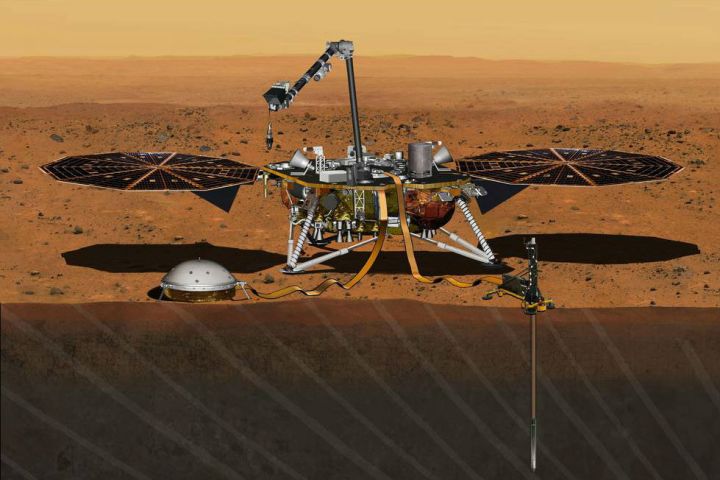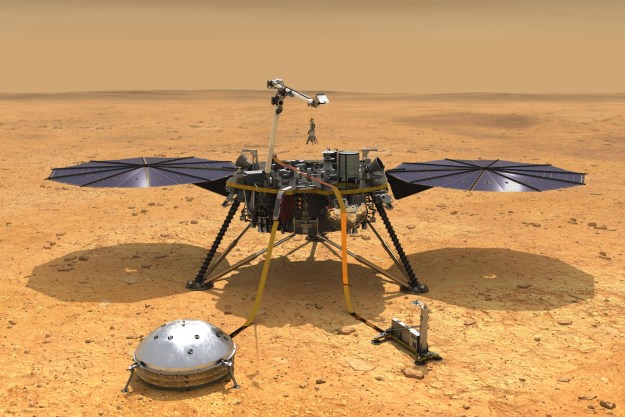
Despite the fact that previous plans had NASA on track for a launch this month, apparently unfixable vacuum leaks in the “prime science instrument” forced the agency to delay its mission.
“The science goals of InSight are compelling, and the NASA and CNES plans to overcome the technical challenges are sound,” said John Grunsfeld, associate administrator for NASA’s Science Mission Directorate in Washington. “The quest to understand the interior of Mars has been a longstanding goal of planetary scientists for decades. We’re excited to be back on the path for a launch, now in 2018.”
Original Post: We may be getting closer to 3D-printing rocket engines that can take us to Mars, but we’re not actually getting any closer to going back to Mars anytime soon. Following the discovery of minuscule leaks in a vacuum sphere that contains the lander’s seismic instrument, NASA has been forced to delay the mission by at least two years. The leak, initially discovered at the beginning of December, have proven surprisingly stubborn, and now, John M. Grunsfeld, the associate administrator for NASA’s science directorate says, “we just have run out of time.”
The seemingly minor problem apparently has rather major implications, as the previously scheduled launch date of March 2016 will no longer be possible. While Science reports that the space agency will have to wait “at least 26 months before it can try to launch again,” it is unclear whether InSight will ever leave Earth. NASA has not offered any details as to future plans, stating simply, “After thorough examination, NASA managers have decided to suspend the March 2016 launch of the Interior Exploration using Seismic Investigations Geodesy and Heat Transport (InSight) mission. The decision follows unsuccessful attempts to repair an air leak on a key component of the mission’s science payload.”
Still, CNES, the French space agency, is optimistic about the feasibility of a quick fix. “We’re not giving up resolving NASA Mars Insight lander instrument leak [sic],” CNES president Jean-Yves Le Gall said in an interview with SpaceNews. “We have till 5 January to nail it down.”
But he may be alone in his thought process. The director of the Toulouse Space Centre, Marc Pircher, expressed doubts in a statement of his own, saying, “It’s the first time ever that such a sensitive instrument has been built. We were very close to succeeding, but an anomaly has occurred, which requires further investigation. Our teams will find a solution to fix it, but it won’t be solved in time for a launch in 2016.”
Sorry Mars — don’t expect an earthly visit anytime soon.
Editors' Recommendations
- NASA’s InSight lander detects ‘monster quake’ on Mars
- NASA Mars experiment success brings crewed missions closer to reality
- First flight of Mars helicopter Ingenuity delayed until next week
- NASA lays groundwork for ambitious Mars Sample Return mission
- NASA’s InSight lander is going into hibernation for the Martian winter


